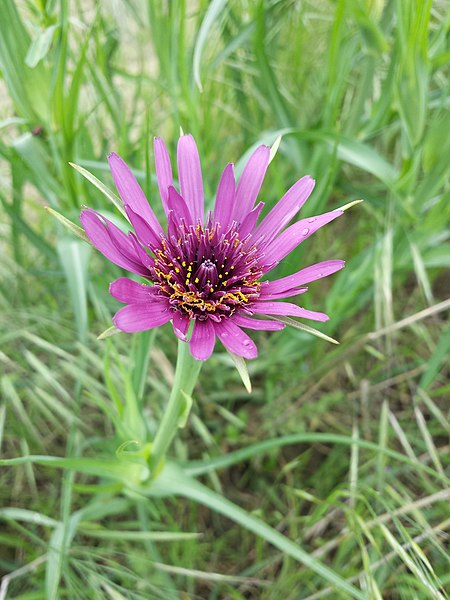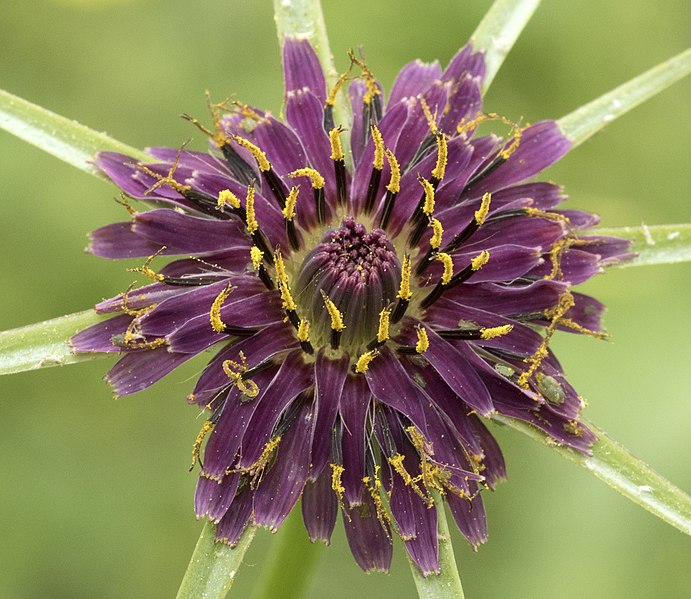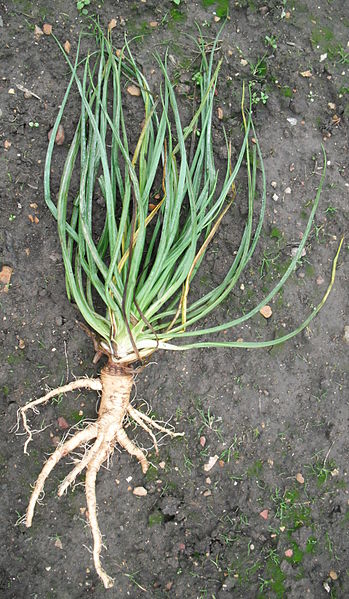Purple Salsify Identification – Tragopogon porrifolius
Heads up
Purple Salsify, or Tragopogon porrifolius, is a plant belonging to the Asteraceae family, making it a relative to daisies and sunflowers. This plant is commonly known as the Purple Goat’s Beard. Why this name, you wonder? Well, the appearance of its seed heads, which look similar to dandelions, might remind one of a fluffy beard.
The roots of this plant trace back to regions ranging from the Canary Islands to the Mediterranean. It’s astonishing how widely it’s spread, from native territories to introduced regions, including Canada and the USA. Purple Salsify plays a part in the ecosystem. Its attractive flowers are pollinated by insects and can draw bees and butterflies.
Purple Salsify: Key Parts in Photos




How to identify Purple Salsify
When you’re out and about, keep an eye out for its distinctive flower. During its bloom season from April to August, each stem culminates in a single, daisy-like flower head with mauve-colored petals. At the flower’s center, you’ll notice deep purple, almost black florets highlighted with yellow stigmas. Surrounding the flower, there are 8 long sepals, which are unique leaf-like structures, that are even longer than the petals.
The leaves of this plant might remind you of long blades of grass. Alternating along the stem, these light green leaves have a smooth feel and if you touch the underside, you’ll notice a powdery texture. It’s fascinating how the base of these leaves clasp the stem, a distinct characteristic of the Purple Salsify. Its stem contains a sticky, milky sap.
Purple Salsify’s roots are its most prized part, often eaten as a vegetable. Some even say they taste like oysters! Before the plant flowers, both its roots and leaves can be consumed, either cooked or raw. But that’s not all – it’s been used for medicinal purposes as well.
Its fruits are unique and resemble the dandelion puffballs we often see kids blowing into the wind. These puffballs, known in botany as ‘achenes’, carry the seeds. The structure is intriguing with a parachute of fine white hairs, and a tiny brownish seed at the base.
